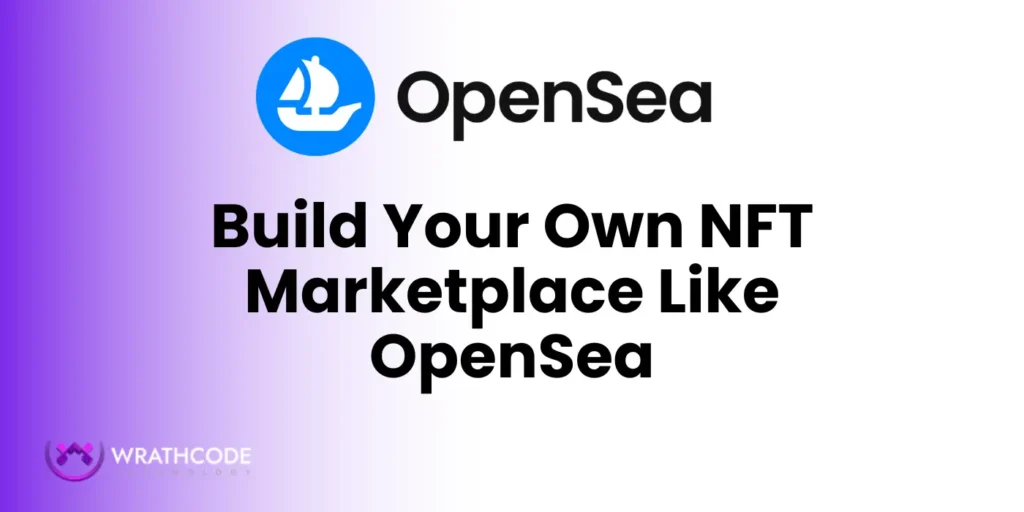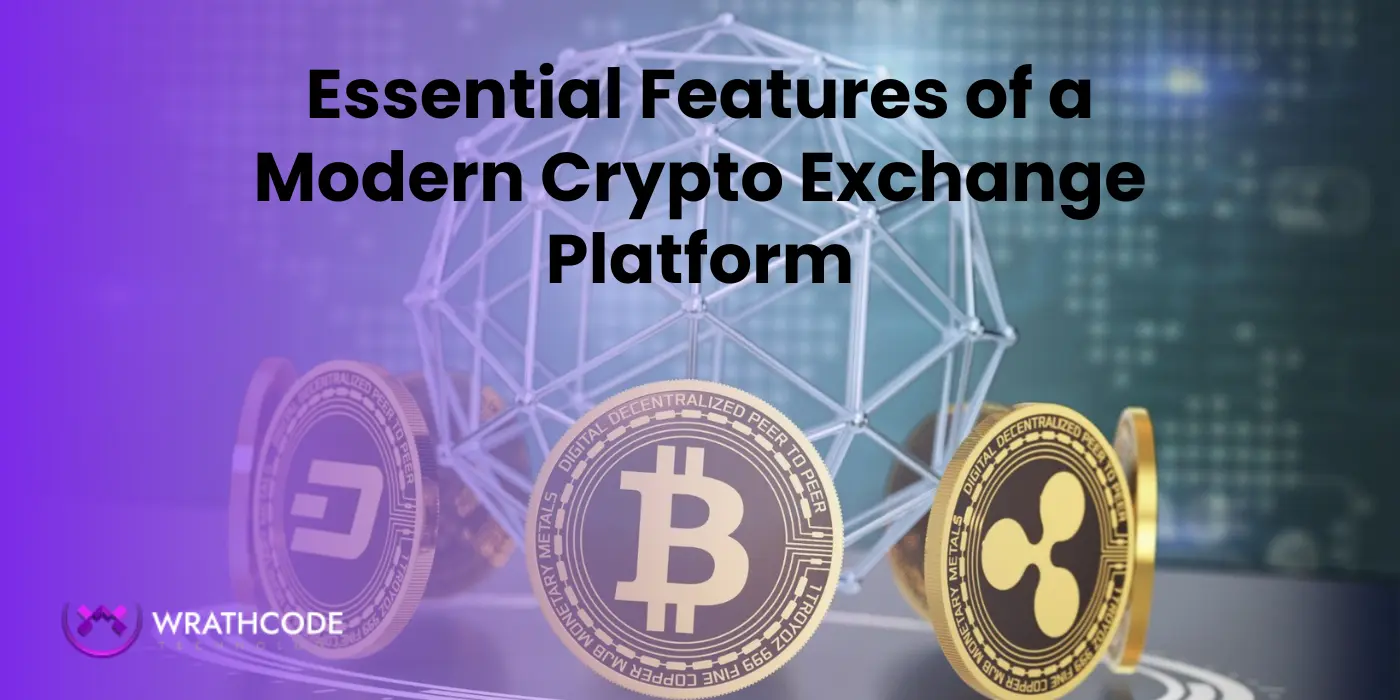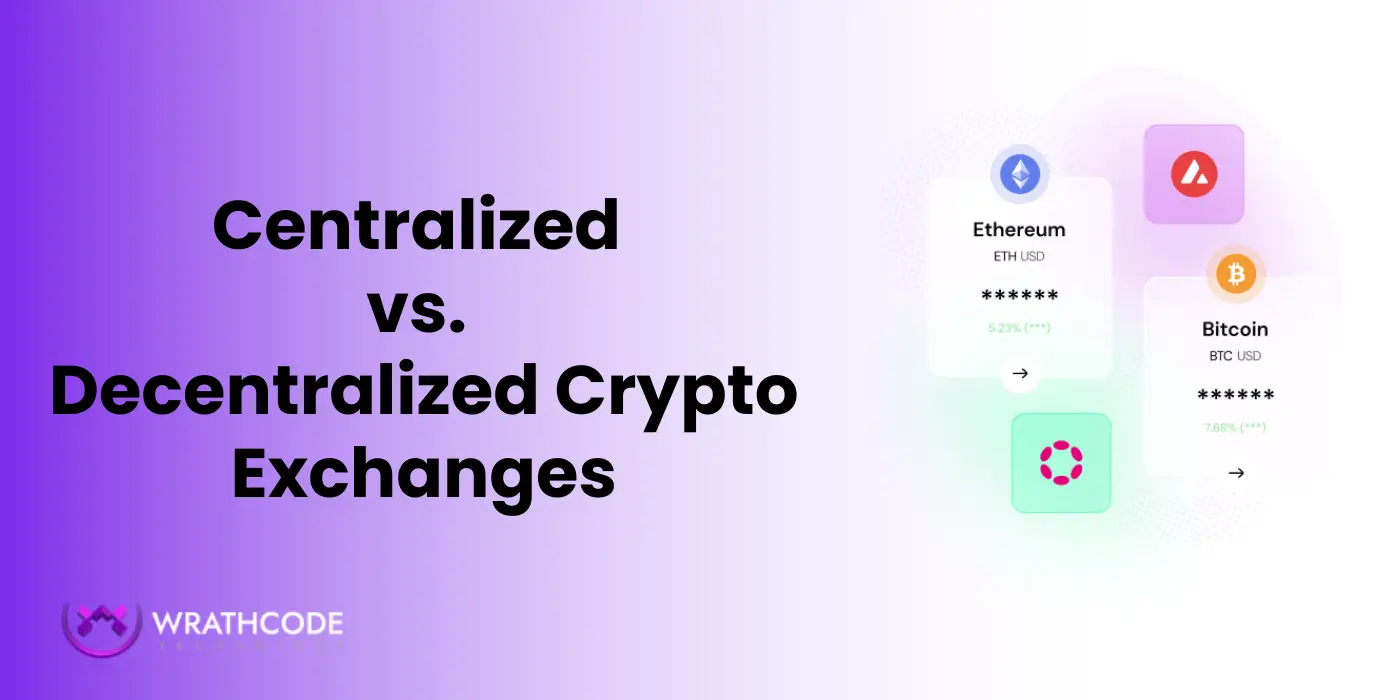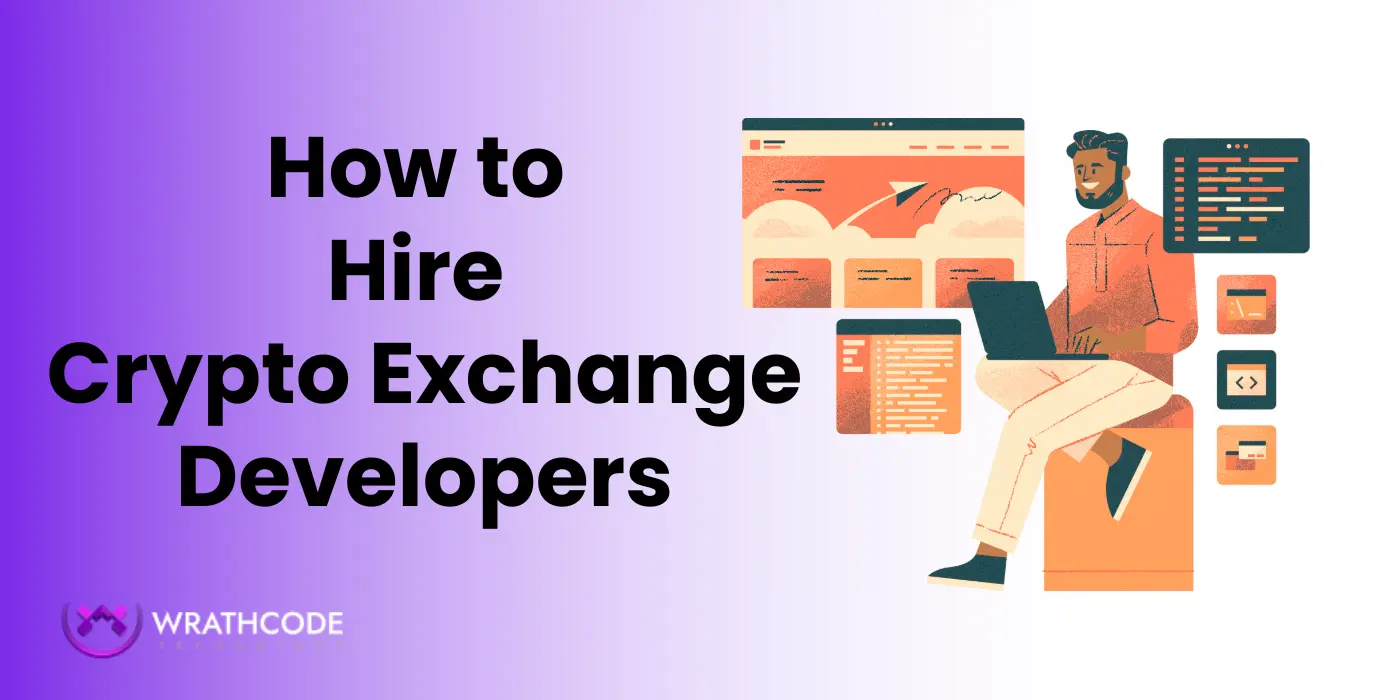
NFT marketplaces are booming. OpenSea leads the pack. Entrepreneurs and creators see huge potential in launching their own platforms. But building one is not as simple as it seems.
In this guide, you’ll learn how to build your own NFT marketplace like OpenSea—step by step. From selecting the right blockchain to developing features, smart contracts, and security measures, everything is covered.
By the end, you’ll understand how to turn your NFT marketplace idea into a live platform, what it takes to stand out in the market, and why you should choose Wrathcode NFT Marketplace Development Service.
What Is an OpenSea NFT Marketplace?
An NFT marketplace is a platform where users can buy, sell, and trade non-fungible tokens (NFTs). These tokens represent digital assets like art, music, collectibles, or virtual real estate.
OpenSea is the most popular NFT marketplace. It offers easy-to-use features, supports multiple blockchains, and attracts millions of users worldwide. Entrepreneurs want to replicate its success by building their own NFT marketplaces.
Key points about OpenSea NFT marketplace:
- Users can mint NFTs directly on the platform.
- Auctions and fixed-price sales are supported.
- Wallet integration allows secure transactions.
- Royalties ensure creators earn from secondary sales.
- Platforms can be multi-chain, supporting Ethereum, Polygon, and more.
OpenSea combines ease of use, security, and community trust. If you plan to build your own, these elements must be part of your roadmap.
Core Features of OpenSea
To build an NFT marketplace like OpenSea, your platform must include key features that users expect. These features ensure smooth trading, user trust, and engagement.
- NFT Minting – Users can create and list NFTs without technical knowledge.
- Auctions & Bidding – Supports both fixed-price sales and competitive bidding.
- Wallet Integration – Compatible with wallets like MetaMask for secure transactions.
- Royalties for Creators – Automatically pays creators on secondary sales.
- Search & Filtering – Allows users to easily find NFTs by category, price, or popularity.
- Multi-Chain Support – Enables trading across Ethereum, Polygon, Solana, and other blockchains.
- User Profiles – Track collections, trading history, and activity.
- Admin Dashboard – Manage listings, users, and platform analytics efficiently.
Including these features ensures your marketplace is functional, competitive, and user-friendly. Missing even one key element can reduce trust and engagement.
Process to Build Your NFT Marketplace Like OpenSea (OpenSea Clone)
Creating an NFT marketplace like OpenSea involves structured stages. Each step plays a role in shaping the platform’s usability, scalability, and security. Here’s how the process unfolds:
1. Define the Business Model
Before any development starts, decide the scope of your platform. Will it serve art, music, gaming assets, or a mix of categories? The business model also defines how revenue flows in—through listing fees, transaction fees, or premium services. A clear business vision ensures your marketplace is built with the right audience in mind.
2. Choose the Blockchain Network
Your choice of blockchain impacts speed, fees, and adoption. Ethereum is the most widely used but often expensive due to high gas fees. Alternatives like Solana, Polygon, or Binance Smart Chain offer faster transactions and lower costs. Selecting the right blockchain helps balance scalability and user affordability.
3. Decide Between Clone Script or Custom Development
A clone script lets you launch faster and at a lower cost. However, it limits customization and long-term growth. A custom-built marketplace offers flexibility, unique features, and stronger security. If you aim for serious growth, custom development is usually the better path.
4. Design UI/UX
User experience is critical. A clean, intuitive interface ensures users can mint, buy, and sell NFTs without friction. Pay attention to navigation, search, and filters. A smooth UI/UX flow reduces bounce rates and builds trust with new users.
5. Develop Smart Contracts
Smart contracts are the backbone of NFT marketplaces. They handle minting, transactions, royalties, and auctions. Writing secure, audited smart contracts ensures that every trade is transparent, automated, and tamper-proof. This step also protects users from fraud or data manipulation.
6. Backend and Frontend Development
The backend manages marketplace operations such as user accounts, listings, notifications, and analytics. The frontend is the user-facing interface, often built with frameworks like React or Vue. Both layers must work together seamlessly for smooth marketplace performance.
7. Wallet and Payment Integration
Your marketplace should support popular crypto wallets like MetaMask, Coinbase Wallet, or Trust Wallet. Multi-wallet support makes it easier for users to onboard. Payment gateways for fiat transactions can also be added to attract non-crypto users.
8. Testing and Security Audits
Testing ensures all features work as expected. Security audits of smart contracts and backend systems are vital to prevent exploits. Every transaction must be safe, fast, and transparent. Rigorous QA reduces risks before launch.
9. Launch and Deployment
Once the platform is tested, it’s deployed on the chosen blockchain and opened to users. A soft launch or beta release helps identify last-minute bugs. After fixes, a full public launch can follow with marketing campaigns to attract users.
10. Post Launch Support and Updates
Launching the platform is only the beginning. Continuous updates, bug fixes, and feature upgrades are necessary to stay competitive. Ongoing technical support ensures your marketplace adapts to changes in the NFT ecosystem.
Tech Stack for NFT Marketplace Development Like OpenSea
The right tech stack decides how well your marketplace performs. It affects speed, security, scalability, and user experience. Below is a breakdown of the key technologies used to build an NFT marketplace similar to OpenSea.
1. Frontend Development
The frontend is what users interact with. It must be responsive, fast, and intuitive.
- Frameworks: React.js, Angular, or Vue.js.
- Styling: Tailwind CSS or Bootstrap for clean, modern design.
- Key Focus: Simple navigation, fast page loads, mobile compatibility.
2. Backend Development
The backend powers the marketplace. It handles listings, bids, notifications, and analytics.
- Languages & Frameworks: Node.js, Django, or Ruby on Rails.
- Databases: MongoDB, PostgreSQL, or MySQL.
- Key Focus: Scalability, security, and smooth communication with blockchain APIs.
3. Blockchain Network
Your choice of blockchain affects costs and adoption.
- Ethereum: Most popular but gas fees are high.
- Polygon (MATIC): Cheaper transactions, Ethereum-compatible.
- Solana: High speed and low cost, ideal for large-scale projects.
- Binance Smart Chain: Affordable and widely used.
4. Smart Contracts
Smart contracts automate trading, minting, and royalties.
- Languages: Solidity (Ethereum, Polygon, BSC) or Rust (Solana).
- Testing: Truffle, Hardhat, or Ganache for smart contract testing.
- Key Focus: Security audits to prevent hacks and exploits.
5. Storage Solutions
NFT metadata and files must be stored securely and reliably.
- IPFS (InterPlanetary File System): Decentralized file storage.
- Pinata: IPFS-based service for easier file management.
- Arweave: Permanent, blockchain-based storage solution.
6. Wallet Integration
Wallets connect users to your platform for transactions.
- Popular Choices: MetaMask, Coinbase Wallet, Trust Wallet, WalletConnect.
- Key Focus: Multi-wallet support and smooth onboarding.
7. Security Layers
Security is critical for user trust.
- Techniques: SSL encryption, DDoS protection, smart contract audits, KYC/AML integration (if needed).
- Goal: Protect users and prevent fraud.
OpenSea Clone vs Custom NFT Marketplace
When planning your marketplace, you’ll face two choices: building an OpenSea clone or creating a custom platform. Both options have advantages, but the right one depends on your goals, budget, and timeline.
1. OpenSea Clone
An OpenSea clone is a pre-built solution modeled after OpenSea’s core features.
- Speed of Development: Launch quickly since most features are already developed.
- Lower Cost: Saves money compared to building everything from scratch.
- Proven Workflow: You get tested features like minting, listing, and auctions.
- Limitations: Less flexibility. Scaling and adding advanced features may require heavy customization.
2. Custom NFT Marketplace
A custom marketplace is developed from the ground up.
- Full Flexibility: Every feature is designed around your vision.
- Brand Identity: Stand out with unique UI, features, and user flows.
- Scalability: Easier to add new modules like DeFi integration, DAO governance, or gaming elements.
- Cost & Time: Requires higher investment and longer development cycle.
3. Which One Should You Choose?
- If your goal is faster time-to-market with a limited budget, an OpenSea clone is a good start.
- If you want to compete with established platforms and build long-term value, a custom marketplace is the better option.
Our Salient OpenSea Like NFT Marketplace Features
Building a marketplace like OpenSea requires more than just blockchain integration. It’s about creating a feature set that delivers convenience, security, and engagement. Below are the key features we implement in our OpenSea-like NFT marketplace solutions:
1. Seamless User Onboarding
Users can register or connect their wallets with just a few clicks. Support for popular wallets like MetaMask, Coinbase Wallet, and Trust Wallet ensures accessibility.
2. NFT Minting
Creators can easily mint NFTs by uploading digital files, adding metadata, and deploying smart contracts. The minting process is smooth and gas-efficient with multi-chain support.
3. Multiple Selling Models
We integrate diverse selling options such as fixed-price sales, Dutch auctions, and timed auctions. This gives sellers flexibility and buyers more ways to engage.
4. Advanced Search & Filters
Users can find NFTs quickly through category filters, collection-based searches, and keyword-based discovery. Sorting by price, rarity, or trending items enhances visibility.
5. Secure Wallet Integration
The marketplace connects securely with crypto wallets, allowing instant transactions and portfolio management without exposing private keys.
6. Smart Contract Automation
From executing trades to royalty distributions, smart contracts handle transactions without intermediaries. This guarantees transparency and trust.
7. Multi Chain Support
Our solutions work across leading blockchains such as Ethereum, Polygon, Solana, and BSC, enabling lower fees and broader adoption.
8. Royalties & Resale Tracking
Every time an NFT is resold, royalties are automatically sent to the original creator. This keeps artists incentivized and ensures ongoing revenue streams.
9. Admin Dashboard
A powerful backend for admins helps manage listings, user activity, disputes, and analytics. This ensures smooth operations.
10. Notifications & Alerts
Real-time alerts keep users updated on bids, sales, and marketplace activity. This improves engagement and transaction speed.
Why Choose Wrathcode for Developing an NFT Marketplace Like OpenSea
Choosing the right development partner is as important as the technology itself. At Wrathcode, we focus on delivering NFT marketplaces that are scalable, secure, and business-ready. Here’s why clients prefer us for NFT marketplace development:
1. Proven Expertise in Blockchain Development
Our team has hands-on experience with Ethereum, Polygon, Solana, Binance Smart Chain, and more. This allows us to build marketplaces that run smoothly across multiple networks.
2. End-to-End Development
From idea validation and UI design to smart contract development and deployment, we handle the full cycle. You don’t need to coordinate with multiple vendors.
3. Security-First Approach
We conduct rigorous smart contract audits, integrate fraud detection layers, and follow strict security protocols to keep your platform safe from exploits.
4. Customization & Flexibility
We don’t just deliver cookie-cutter solutions. Whether you need a direct OpenSea clone or a fully customized marketplace, we adapt features to fit your business model.
5. Faster Time-to-Market
Using proven frameworks and agile workflows, we help you launch your platform quickly without compromising on quality.
6. Post-Launch Support & Scaling
Our responsibility doesn’t end at deployment. We provide continuous support, feature upgrades, and scaling solutions as your marketplace grows.
7. Transparent Pricing
We keep development costs clear and aligned with your goals. No hidden charges, just straightforward collaboration.
Ready to Build Your NFT Marketplace Like OpenSea? Contact Us now and turn your marketplace idea into a powerful, revenue-driven platform.
Conclusion
Building an NFT marketplace like OpenSea requires the right balance of technology, features, and expertise. From choosing the best blockchain network to integrating smart contracts, storage, and wallet systems — every decision shapes the success of your platform.
Whether you want a quick OpenSea clone or a fully customized marketplace, the goal is to create a platform that is secure, scalable, and user-friendly. With the NFT market continuing to grow, now is the right time to establish your presence and capture opportunities.
At Wrathcode, we specialize in turning NFT marketplace ideas into reality. Our team provides end-to-end solutions with strong focus on security, performance, and long-term growth.
FAQs
To build an NFT marketplace like OpenSea, you need to choose a blockchain network, develop smart contracts, design the frontend and backend, integrate wallets, and add features like minting, auctions, and royalties. Partnering with an experienced NFT marketplace development company speeds up the process and ensures security.
You can create your NFT marketplace by defining your business model, selecting a blockchain, developing smart contracts, and integrating storage solutions like IPFS. Adding wallet support, secure payments, and a user-friendly interface is crucial. Hiring professionals makes the process faster and helps avoid costly errors.
Yes, OpenSea is accessible in India, and trading NFTs on it is legal. However, India does not have specific NFT regulations yet. Users must comply with general tax rules and crypto-related guidelines issued by the authorities. Consulting a legal expert before launching your marketplace is recommended.
The cost of building an NFT marketplace depends on features, design complexity, blockchain choice, and customization level. A basic OpenSea clone may cost around $30,000–$50,000, while a fully custom marketplace with advanced features can exceed $100,000. Exact pricing varies based on your requirements and development team.




Leave a Reply